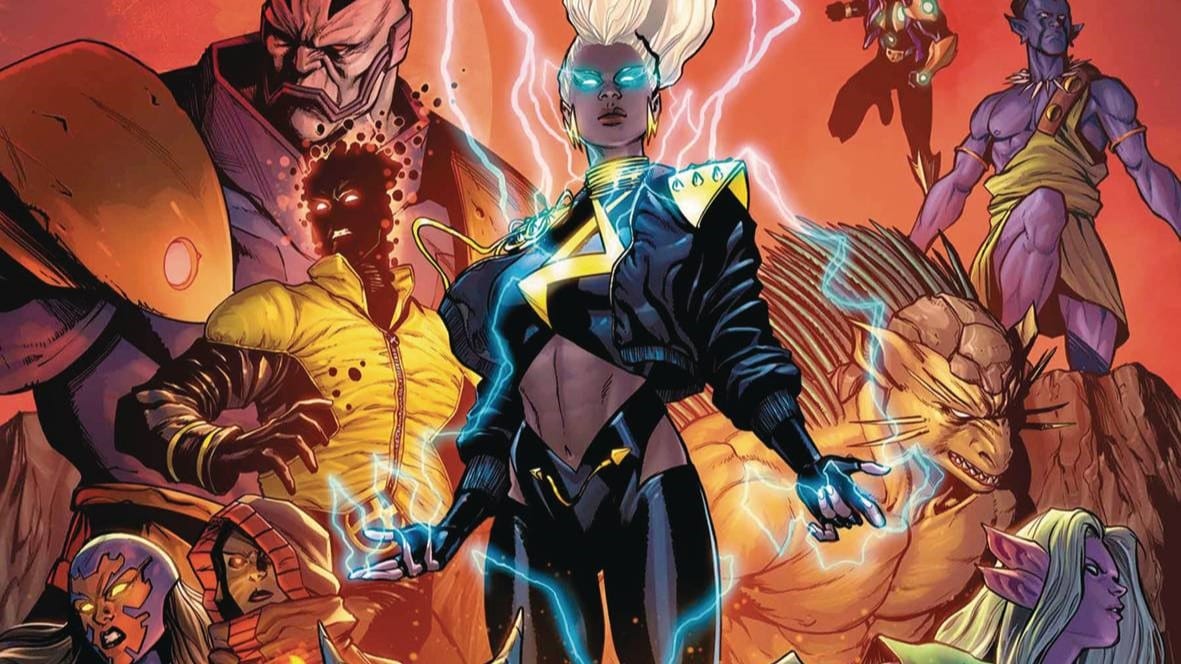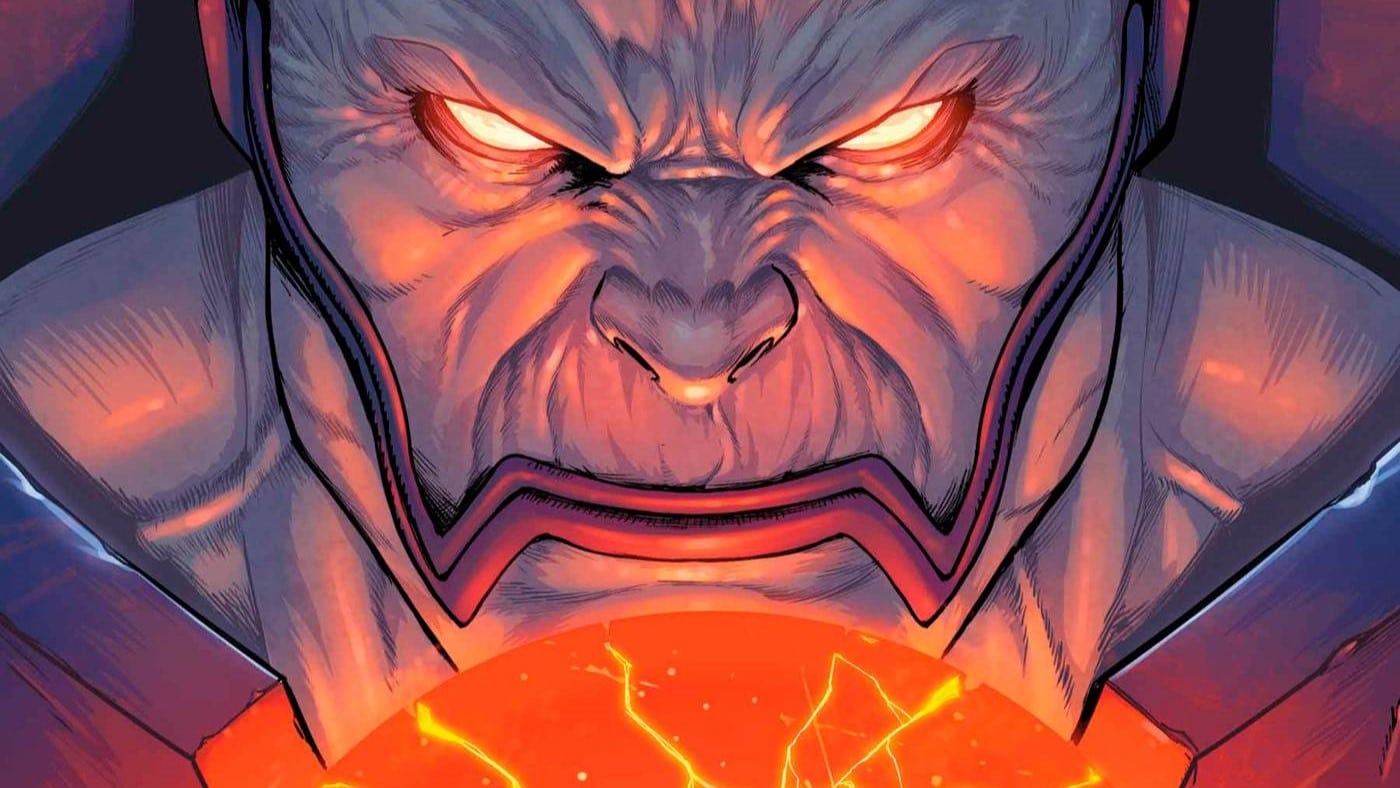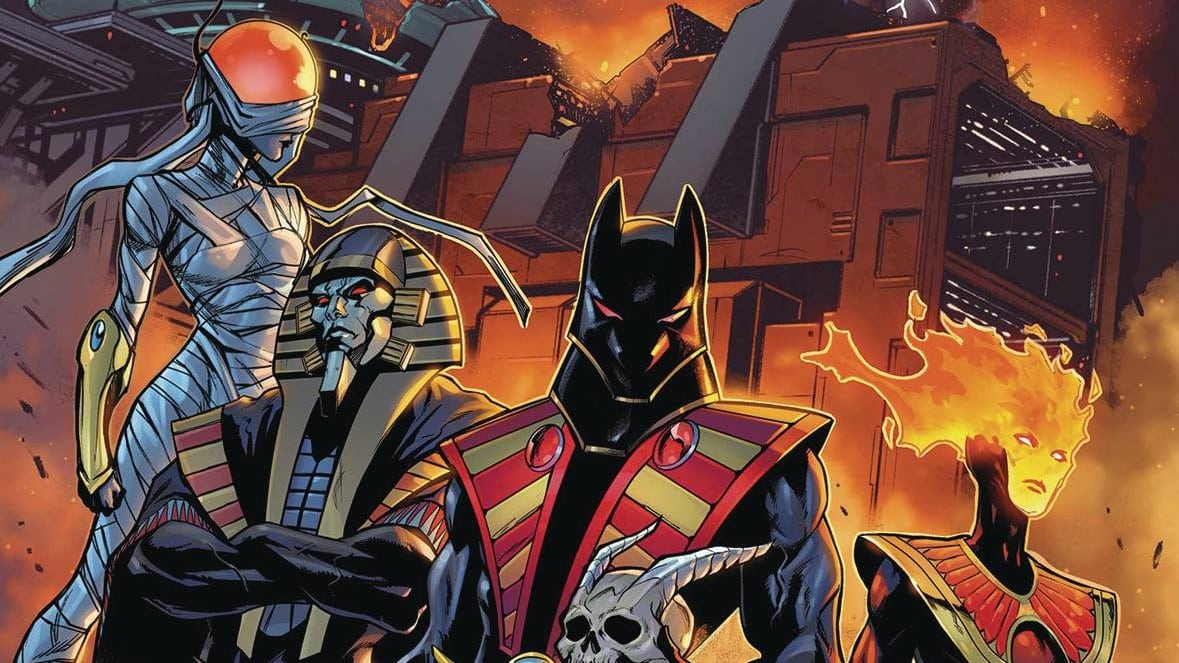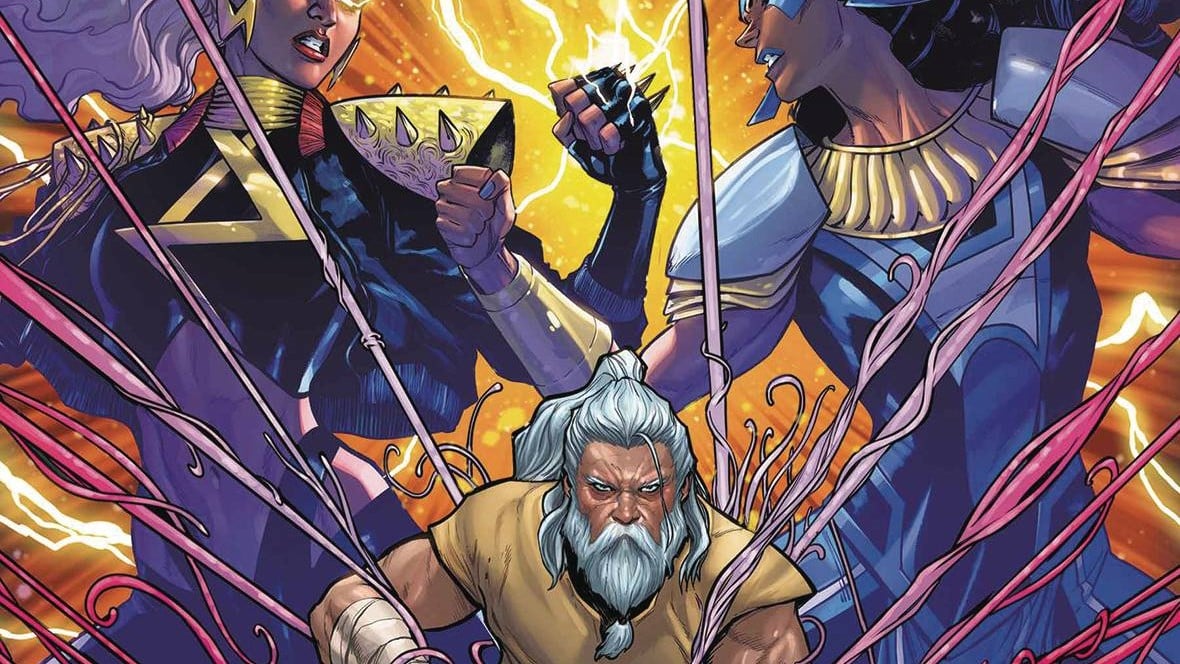The Red Planet bleeds as Arakko forges a new path in Al Ewing & Madibek Musabekov’s X-Men: Red #7.
In my father’s study, perched above rolls of processed film and terabytes of photo files, a black and white picture of Miles Davis surveys the workspace. In it Miles, clad in an open-chest white jacket, surveys white papers on a white desk, the brightness of the room contrasting starkly against his shimmering, rich dark skin.
The photographer, Herman Leonard, gifted this piece to him for work done. My father appreciated not just for its beauty, but as a reminder of greatness as he, in his study, worked toward greatness on his own terms.
Every Miles Davis record – from Kind of Blue to On the Corner – works. He made almost exclusively masterpieces. And yet these works, especially his later works, rarely resembled each other. You didn’t know what you were going to get when you first dived in, save that what you were getting was going to be great.
You could easily replace Miles Davis in the above paragraph with Al Ewing. I argue you should. His works, varied as they are, all find ways to manifest frestness. X-Men Red, as a series and in this, it’s seventh issue, is no different. I may sound like a broken record saying yet again how great it is; I argue a better analogy is a new Miles Davis record: the greatness is assured, but the pleasure is in experiencing that greatness manifest.
So I invite you to kick off your shoes, pour a drink, and sit with me as I try my best to walk through this greatness.
This issue is an exemplary space for characters to stretch out, examine their surroundings and breathe.
Or, in the case of Magneto, stop breathing.
The Beginning of the End.

Death, in comics, merely signals rebirth. Death is rarely permanent (save for Uncle Ben…I think?), and is usually just a means to reset the character. This, in most cases, is fine. Magneto is not most cases. I’m not sure I want to let go of where Magneto is now.
In his waning moments of life, held together by Storm’s lovingly gentile electric current (the sensual Yang to last months erotic Yin of Omega mutant power), the metamorphosis from cartoonish villain to anti-establishment revolutionary to statesman-like hero completes. Magneto grew as a character, as a man, noting, ironically and earnestly, that the future of mutants was intertwined with the survival of humans – a completely earned 180 degree turn from his initial inception. (Though vestiges of cartoonish villainy remain: even at the end, he’s still giving soliloquies.) That doesn’t mean he’s not clear eyed about his opponents or in the business of showing them mercy (see: Tarn). But the child of the Holocaust finally grew into the man who opposes oppression on behalf of all those oppressed – powered mutant or genteel human. Last issue, we noted how one becomes Arakki not because of power, but because of persistence and presence. Magneto finally recognized the same about allies, albeit at the last moments of his life.
There are certainly many ways he can (will!) be resurrected – by his daughter, by the son of his best friend, by a former nazi with a diamond in his head and the ability to reset reality. I fear, no matter the means, that resurrection will reset the character Magneto to a less enlightened state of being. I know fretting about what might happen isn’t the best use of space to talk about what is, but it’s also worth mentioning – and mourning – how Magneto’s grown and matured to become a purer protector of his people than the man he’s most often compared to: Professor X.
And of the Professor: Magneto’s dying wish was for Storm to watch him. Not to protect him from some outside evil, but to protect him from himself, from making a choice or set of choices that would annihilate everyone.
Certainly this is foreshadowing; the question is if it’s for something coming sooner, or later?
In any case, I appreciate that Mags gets the space to fully articulate and receive some form of redemption. He’s earned his rest.
That said, I still argue we deserved to see how dramatic the moments leading up to his passing were. The fight with Uranos was set up to be an epic team up, yet all we got in AXE 5 were 4-5 pages of implied damage from only Magneto and Storm. And while the implications and inferences can be masterfully sufficient, I think we lost by not seeing that epicness on page.
I’m not the only person, it turns out, who’s experienced loss.
The End of the Beginning

After the losses of Hurricane Ian, a bunch of physically and politically disparate communities are going to have to figure out how to rebuild. In many cases, because people have idealistic memories of what was, and because people’s (and corporate) identities are tied to those ideals, those people (and corporations) will try their best to rebuild exactly as things were.
Is this wise? Is this necessary? I’ll leave that for others to determine.
But with destruction on a higher scale – a planetary level scale, where even the memories of what was were destroyed – rebuilding isn’t possible. Something new has to take root.
Arakki culture is built on the memory of loss. I argue the entire culture is based on trauma bonding. Those memories loom large, defining people and position. So what does a culture look like when memory, lost due to Uranos’ annihilation of Xilo’s body, is no longer reliable?
This is where we find Arakko. On the literal bones of the dead, the Great Ring reassembles. Uranos is defeated, his death machines no longer a threat. Arrako, then, has entered a new phase. And the first question facing the council in this new phase?
How do you deal with a traitor?
Isca’s murder of Idyll was possibly unprecedented (maybe! Since, you know, no more memory!) but absolutely traitorous. And the council, well aware that Isca can’t lose, is left trying to figure out how to deal with someone who can’t be beaten and who, arrogantly, dismissively, knows she can’t be beaten.
And while the Arakki don’t fear death, or fighting against insurmountable odds to prove a point, their fates, as Isca noted, would be sealed with their blood.
Enter the Night Seats who, using subterfuge and thought as opposed to pure physical prowess, found a way to bloodlessly beat Isca at her own game.
When Roberto dared challenge Isca’s concept of self (and subsequently was killed as a result), he exposed the flaw – or curse – of her gift. Sure, she can’t lose, but how much do you lose by not being able to lose? Friendships? Love? Family? Happiness? Ergo when challenged by the Fisher King to a duel of understanding loss, Isca, well….
She could not lose. And yet she lost so much, including the ability to understand – to empathize. By winning, always winning, feeling compelled to win at all costs, she lost her ability to be human (for lack of better term – you know what I mean)… because she could not lose.
The idea that humanity is formed by losing – reinforced subtlety by how much Magento grew in his successive losses and in death – stands in stark contrast to Isca. She’s a turncoat, yes, she’s never lost, yes, but she’s never grown. She’s never matured. She’s never really lived since she was a child, when the threat of losing a game to her sister filled her with joy.
From a meta sense this could be as much about comics and comic characters as it is about these specific ones – growth requires loss, and remaining in the same, a cynical stagnancy, serves no one. Ergo the irony of the ultimate losses – death – usage as a means of stagnation, if not retardation.
Isca, true, cannot lose; but because she cannot lose, and because the Arakki are defined by how much they’ve lost, she realizes she cannot be a leader amongst, well, those who lose.
Isca yields her seat.
Though not defeated (thumbs up from the Celestial!), she leaves the battlefield for places unknown. Storm, fresh from holding her advisory turned friend’s lifeless body, assumes the seat of loss, yielding her previous, decision-making seat to the Lodus Logus (“who should chart (the) future, if not our poets and dreamers?”). The rearrangement of seats means there are still openings on the council, openings that I’m sure will be filled with drama. But the Arakki, for the first time, maybe because their memory is in tatters, look to move forward towards a different – more hopeful and inclusive – future.
A future, it should be noted, that required a lot of loss to achieve. (Again, we should be careful with analogies, but this line of thinking is the basis for more than a few religious thinkers. But that’s a message for another day.)
But this hope only matters if there is tomorrow; and Ororo of the Storm, in taking the Seat of Loss, is focused on keeping everyone alive today so tomorrow may take root.
In Media Res

Meanwhile, while all of this was happening, we caught up with Wiz Kid and Cable, surveying the damage to SWORD Station Two – but not the damage one might think.
We haven’t seen much of Wiz Kid since the SWORD days, where he purposely incapacitated Cable and inadvertently helped brand kill Henry Gyrich. Wisely aware he was probably being used by Abigail Brand, Wiz left a message/apology behind in Cable’s programming once he recovered – a reminder to talk about their shared problem – Brand.
So we see the two meeting on the Keep the station surveying Arakko, the twin space station of the Peak, SWORD’s earth-tethered apparatus. Wiz, giving the most comic book explanation ever, notes that the two stations aren’t merely copies of each other but are actually *the same station in two different places.*
Okay Schrödinger’s Space Station!
Ignoring the physics behind this (Comics!), this rationale means that what happens on one station – any recordings, messages, whatever – is immediately viewable on the other. Thus the two can hack into Brand’s security files on The Keep and not be seen on The Peak.
Thus Wiz looks at Brand’s files with Cable watching on. We don’t see exactly what they see, but we have, over the course of SWORD and Red, seen excerpts from her private files as data pages, detailing her many misdeeds – from killing Gyrich, to setting up cable, from trying to kill Xandra with paid mercenaries to joining Orchis.
So even if we don’t know exactly what they know, we know enough to know they know she’s bad.
Really, really bad.
And Cable, trademarked big gun cocked back, is really, really mad.
I’ve often wondered why, as someone from the future, Cable didn’t already know what to expect from Brand; at the end of the most recent Cable series, he implied to his younger self (I miss you Kid Cable!) he knew how things were going to end for Krakoa. And yet, his distrust in Brand (and his desire to assemble Thunderbird to take her down) feels more like a distrust of who she is, not who she’s slated to become. I could be reading things wrong, but still, I wonder about this time traveler (and time travelers in general) – how much agency do they actually have? How much do they think they have? How much do they want to have? Maybe a better contrast is between Cable and Isca: two people who’s gifts trap them in situations they can’t change, yet fight that inevitability in vastly different ways – at least on the surface.
In any case, Cable mad. Brand bad.
X-Men Red #7? Rad. Very fucking Rad. This is a work of art I’m blessed to observe, and I look forward to next month’s movements to Birth more Cool.
Thoughts:
- Magneto calling for unity amongst the ”undesirables” again makes the mutant analogy obvious. Though, I would argue, nothing about the disenfranchised is undesirable – save for their (our) treatment by the franchised.
- I didn’t focus on the art work. I will say that the faces – particularly the eyes – of all characters in this issue are doing a lot of necessary work.
- Note the Sentinels in the background as Magneto gives his last lament. Remember: the machines don’t care about humans or mutants. Maybe somewhere in Magneto’s mind he retained some memory of the fight with Karima and Nimrod. Who knows?
- Roberto is Black. Too many forget this. I will not.
- Where is Gabriel Summers?
- At this point I half expect Isca to join Orchis. After all, there is no Krakoa in the future and she can’t lose. Sigh.
- Applause for giving Logus script lettering, matching his poetic nature. Little details like this matter.
- What happened when Uranos met Legion? No idea! But! We’ll find out in Legion of X #6
A proud New Orleanian living in the District of Columbia, Jude Jones is a professional thinker, amateur photographer, burgeoning runner and lover of Black culture, love and life. Magneto and Cyclops (and Killmonger) were right. Learn more about Jude at SaintJudeJones.com.






